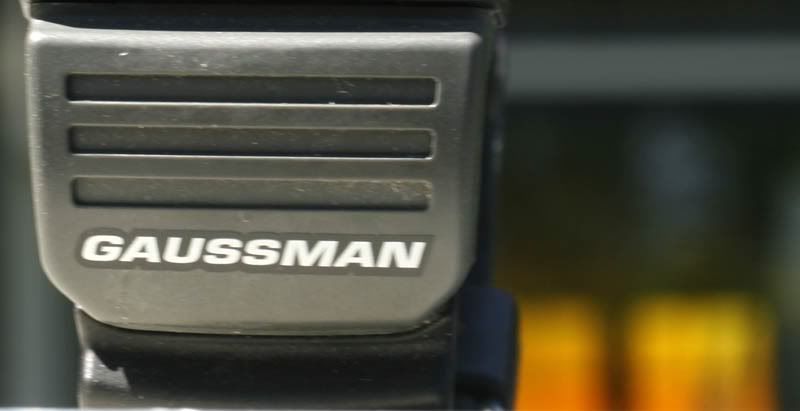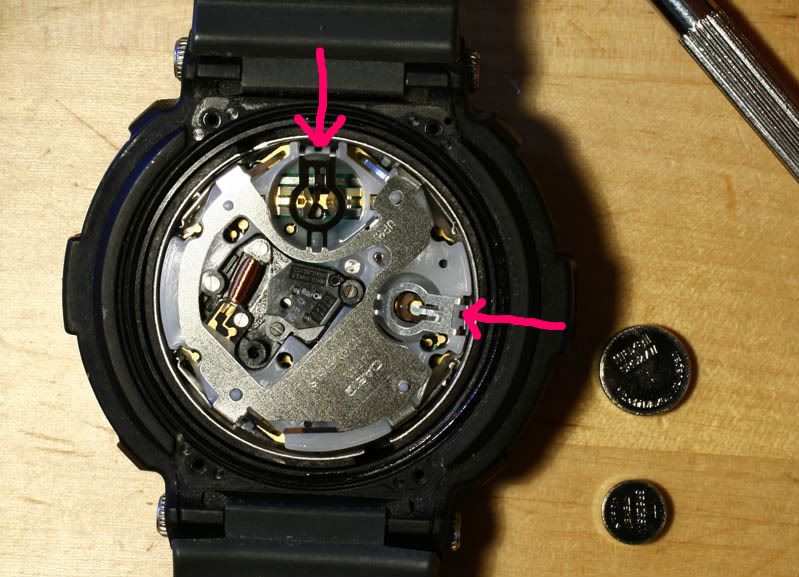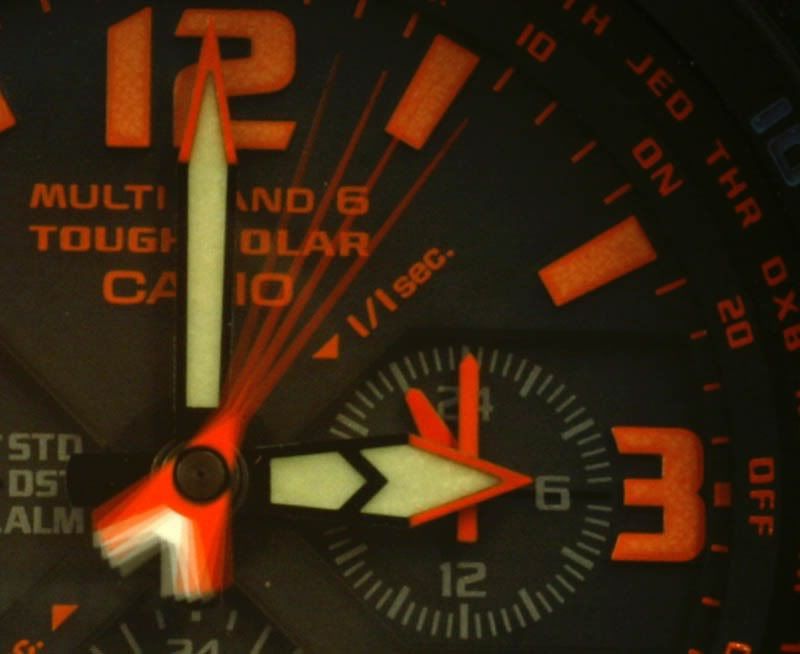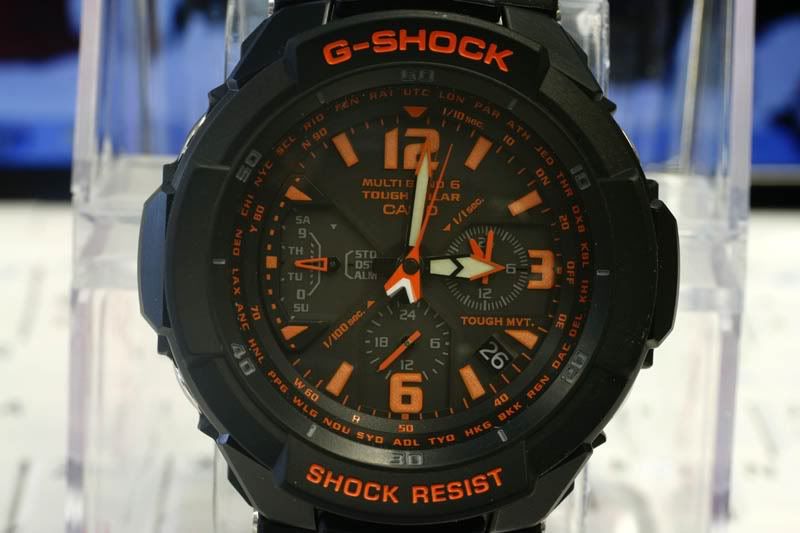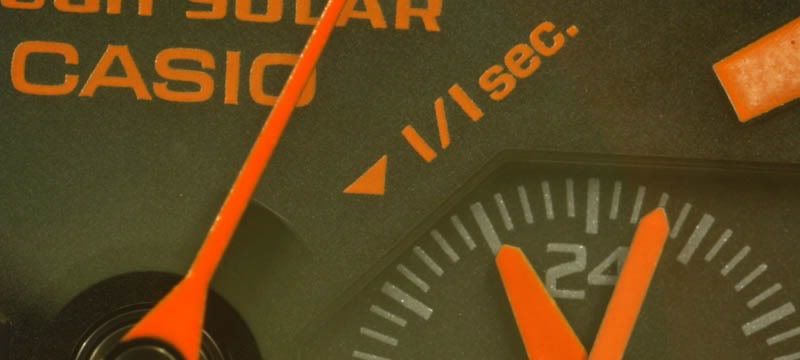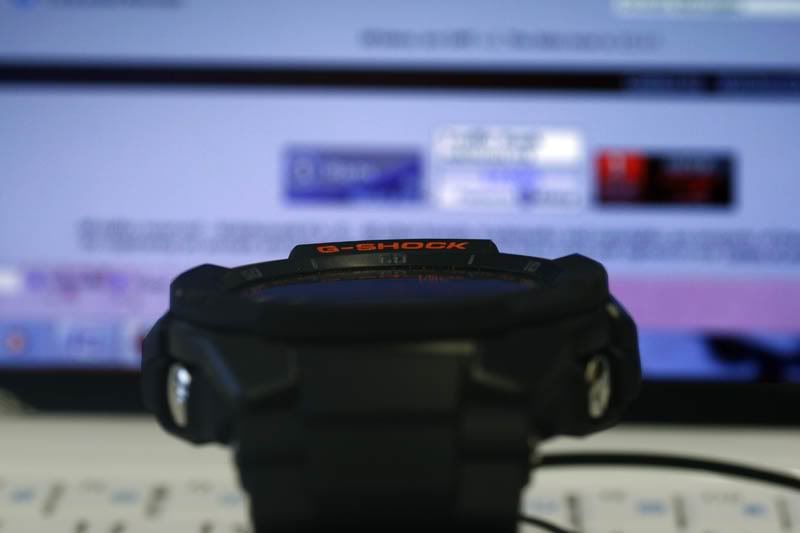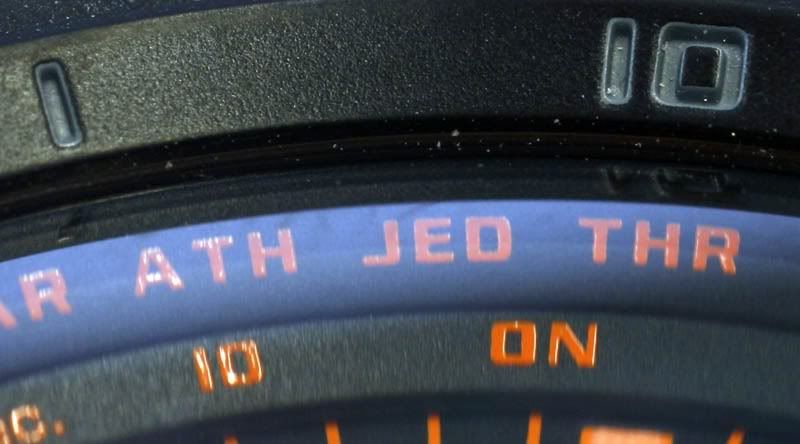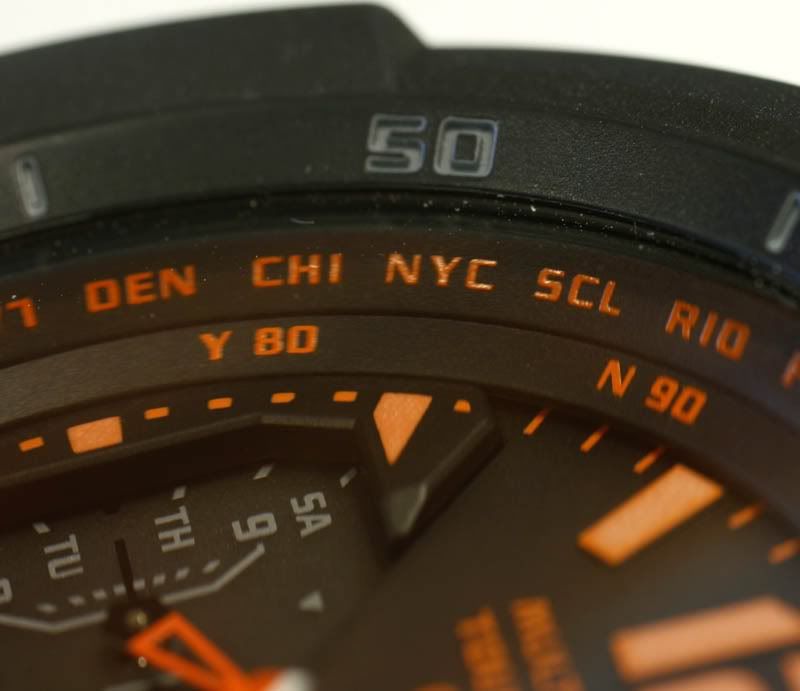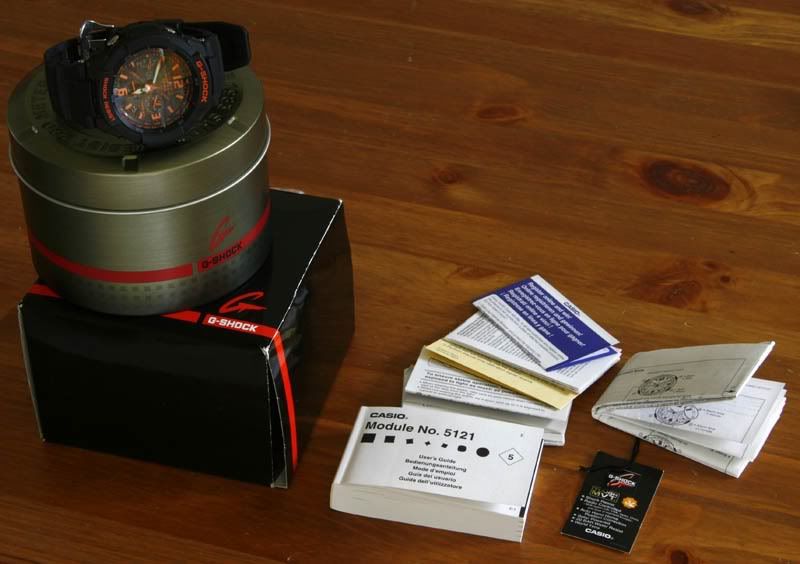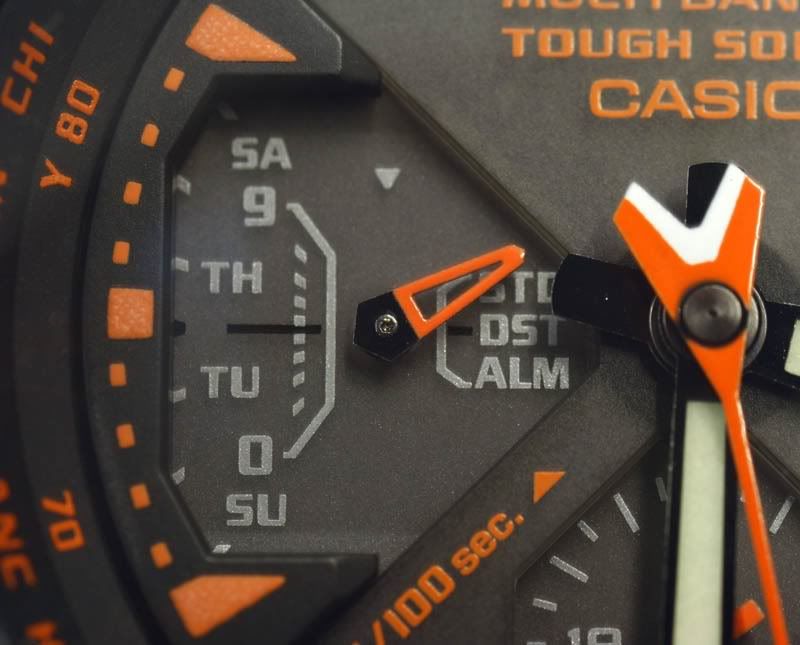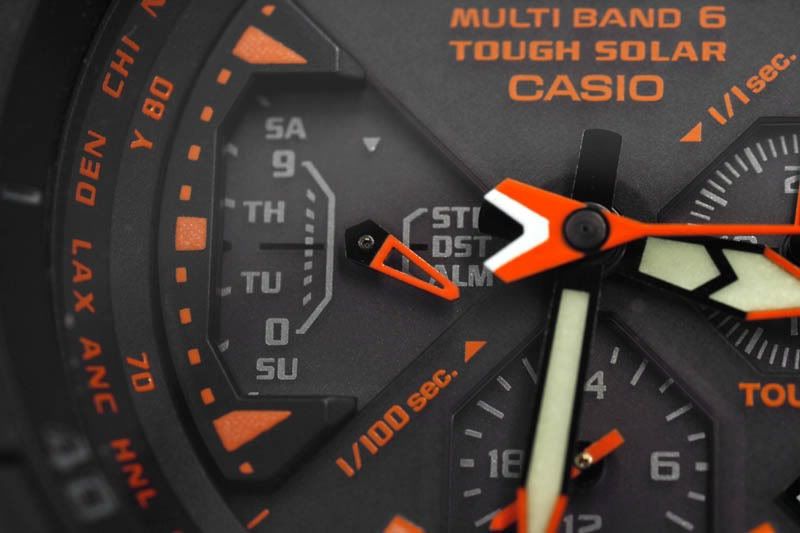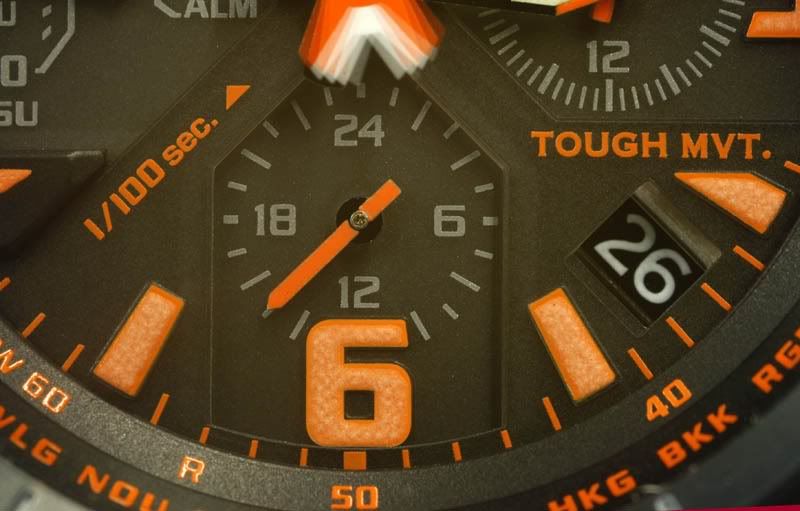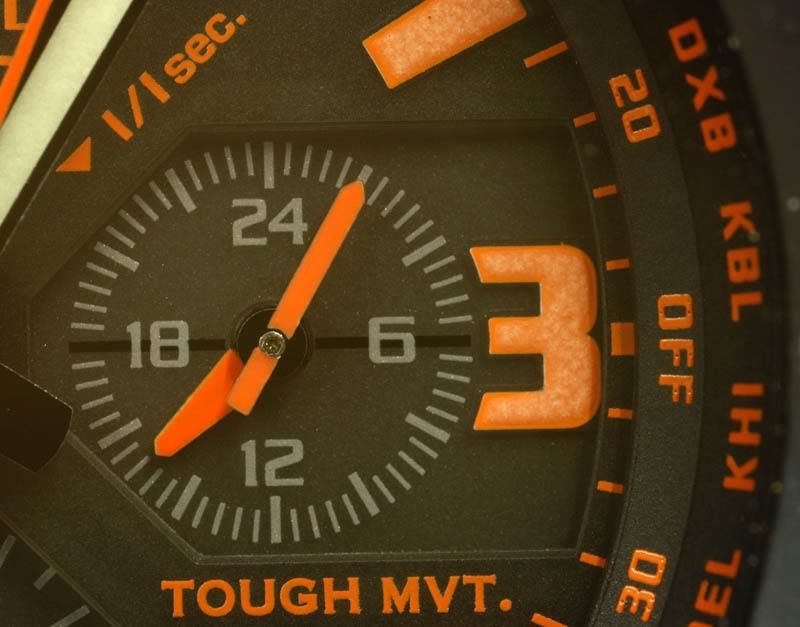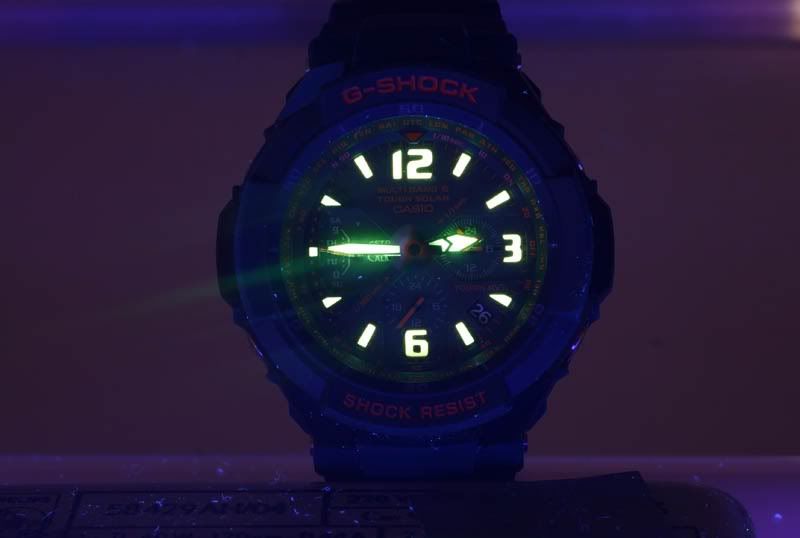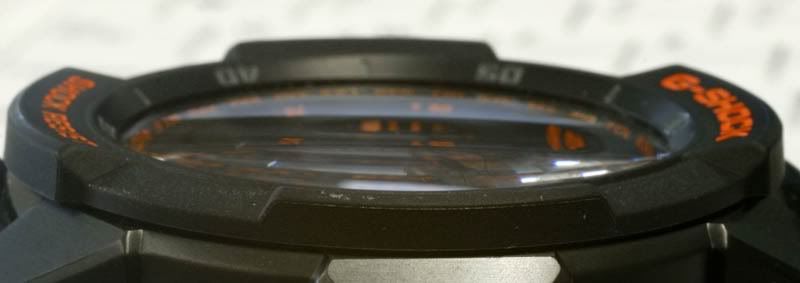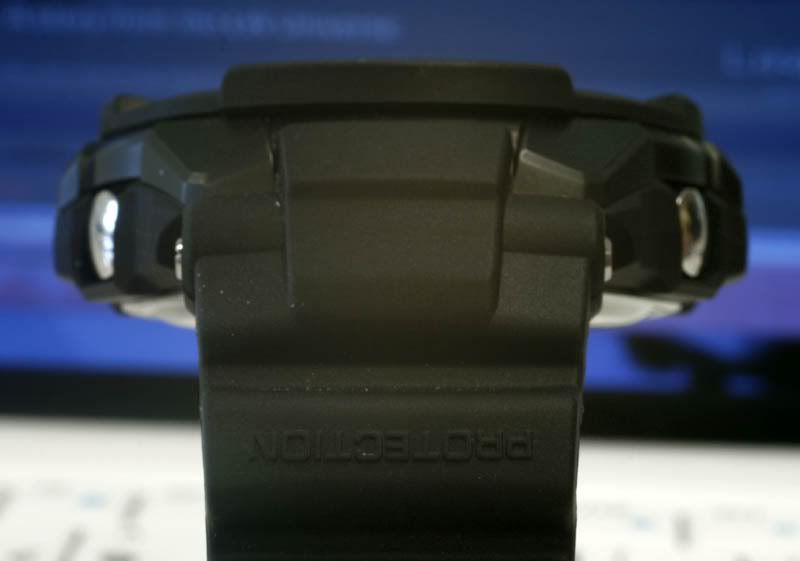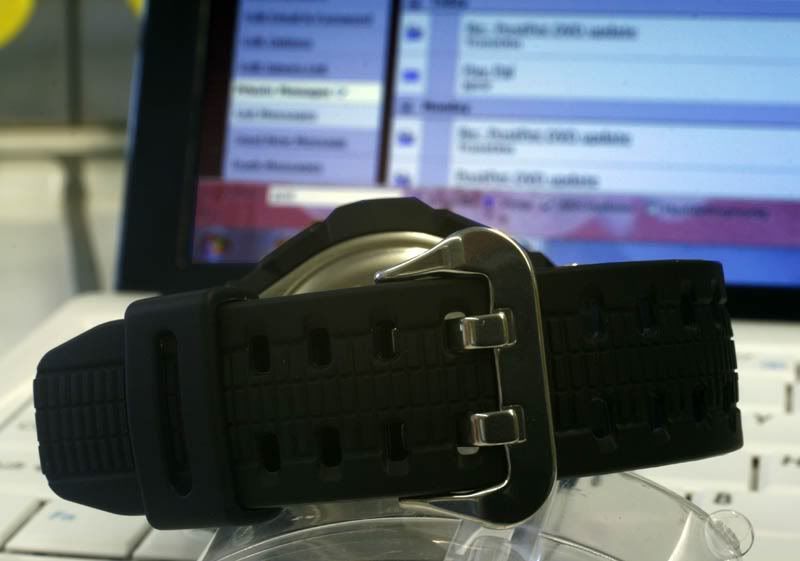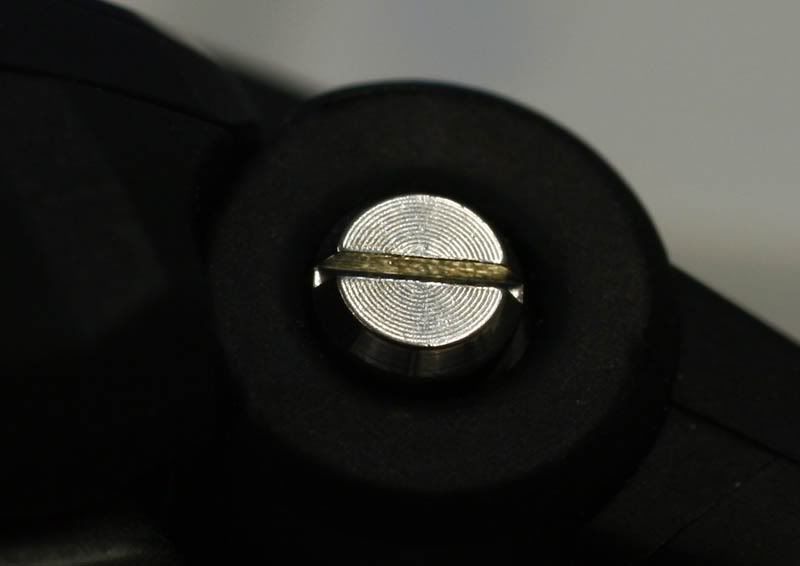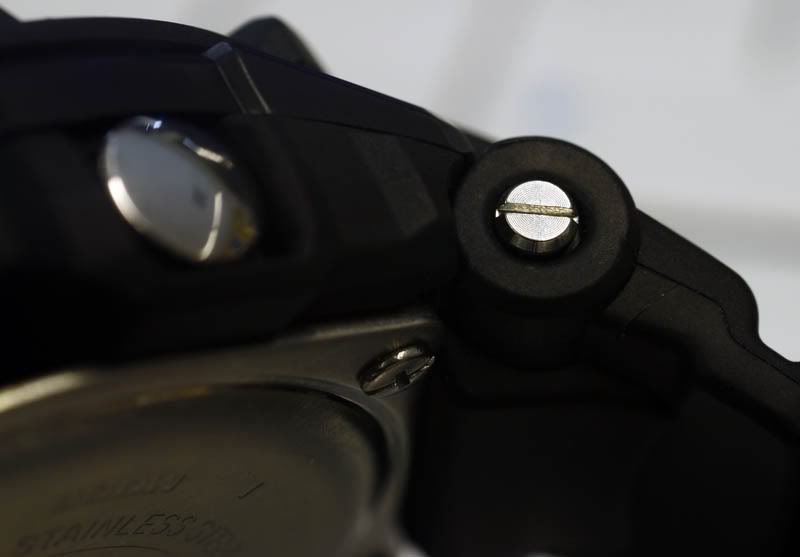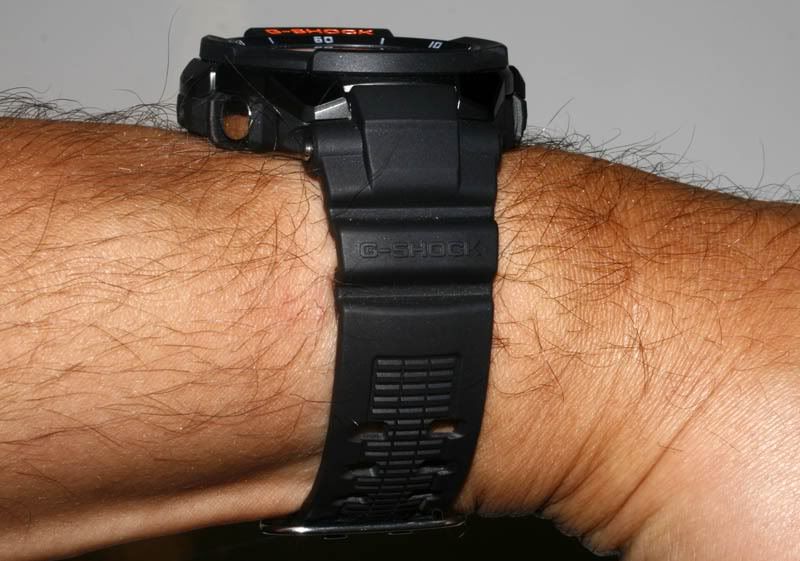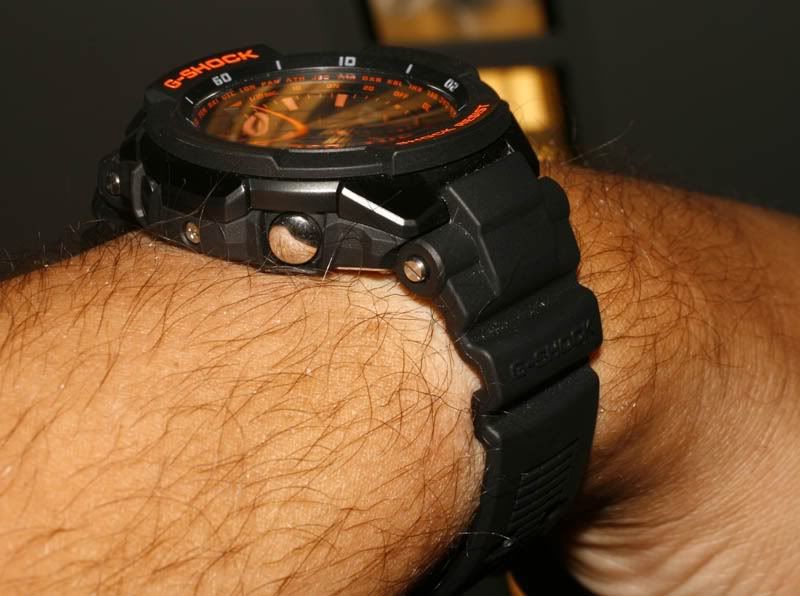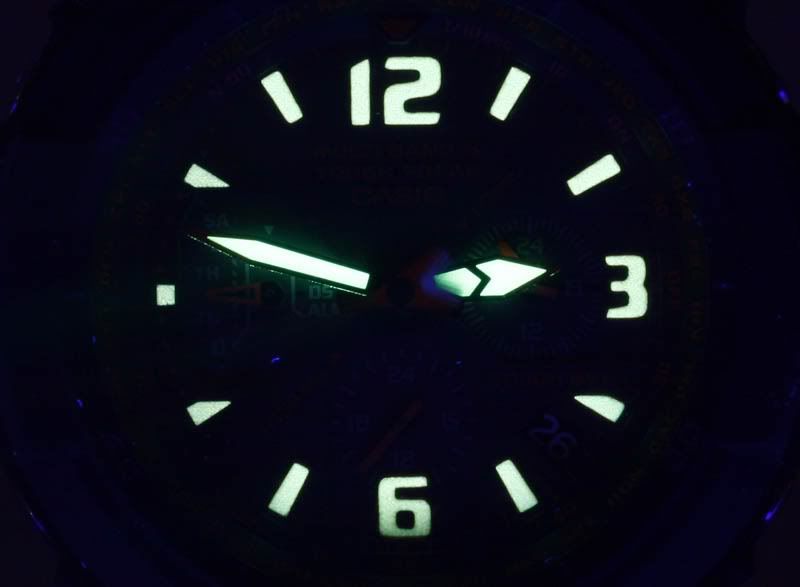I still remember buying my 4th G-Shock. It was a wet evening in November 2000. I just had collected my son Bram from my parents who had been babysitting, while I was at work. Earlier that week I had seen a sale at a jeweler in Vlissingen (Flushing). It was not my regular Casio dealer. I had seen a very nice big, ana-digi G-Shock is a showcase between a lot other branded watches. The discount price was “only” 200 Dutch guilders (around €90.-). Although this was a big amount of money for me that time, I had saved up a little and if I didn’t do strange things, I could afford it. I parked the car near the jeweler while pouring rain ran over the car windows. It must have been round closing time (18:00). The sun had already set for a long time and the sky was black. Only the light of the shop windows shone through the car window. The rain water shadows drew lines on Bram’s face. I got out of the car and took Bram, who was just a baby, with me and walked quickly to the store. Strangely, I do not remember much of me buying that watch in that shop. It must have been a fast transaction. I still remember getting back in the car, starting the engine and drive home. It must have been the surreal lighting of the shop windows light falling in the car and the rain. It was like I was in the middle of an old black and white detective movie.
I was very happy with my new gain. It was big and black and bulky. One of the funniest thing on it were the hands. I think Casio designed deliberately the hands a little small and thick. This adds to the suggestion this watch must be really big.
It was pretty clear this model was called Gaussman. The name was written big on the dial and you can’t miss the print on the straps too.
There is a big mole engraved on the back. His hair is raised by static electricity and he is holding a lightning beam. This is the playful way Casio wants to let you know that this watch can withstand strong magnetic fields, for instance created by high voltages.
I am not sure how strong magnetic fields can affect digital watches. Although the Gaussman looks like a analog watch, the time keeping is done by a quartz movement.
You might actually consider, what is analog in watch terms. Analog means that there is a continuous movement, digital means movement is steps. For a digital watch it’s simple. For regular timekeeping the progression goes in increments of 1 second. As for the digital chronograph, it mostly has increments of 0.01 seconds.
As far as I know classic mechanical watches and clocks are driven by a pendulum movement. This pendulum goes back and forth (according Wikipedia the pendulum in a mechanical watch is the balance wheel with the balance spring). Every time the pendulum reaches the end point, the movement goes forward a bit. So the movement only goes forward at the end point of the pendulum and in between these end points the hands do not move. So actually the classic pendulum clocks and watches are in fact digital too. By reducing the increment time (a fast ticking pendulum), you can let hands move like it goes fluently.
Enough “tik tok philosophy”. This was the first ana-digi G-Shock I owned and I learned the minute hand moves every 20 seconds. This means the hands move with a 2° increments. It sounds maybe like big steps, but on such a small dial you hardly notice it.
There is no seconds hand. Instead of that there are three digital circles (“eyes”) on the dial. The outer rings of the circles consists of 10 blocks. These blocks show up one by one and go out one by one, resulting that in the first 30 seconds the rings are filled, and in the next 30 seconds he rings disappear. These rings act as the second hands of the Gaussman. There is a small rectangular display on the 3 o’clock position on the dial. It normally shows time in hours and minutes, but you can choose to show the day and date or the seconds too.
When you scroll through the functions you notice it is possible to show two digits in the 9 o’clock eye. Therefore it would have been possible to show the seconds in that eye in timekeeping mode all the time. Probably Casio left this out for esthetical reasons. The dial of the Gausman does not look busy. I’m not sure how to define it in English, but in Dutch we would say that “it displays rest”. An ocean of tranquility perhaps. Well, if the designers had that in mind, a nervous eye counting the seconds would indeed have broken the inner peace here. And frankly, when do you know to need the time by the second (well, that was different when I travelled by train to school daily as a student). I somehow have respect for leaving out that option. This gives the watch a more serious look.
There is something funny about the Gaussman. If you do a search on this model (AW-571), you’ll notice that the first model was the Men In Yellow Gaussman in March 1998. Actually the first watch in exact the same shape, case and module was already released in September 1997. It was even looking almost exact like the model featured today. The model number was AW-570. Only the name GAUSSMAN is not present on the dial. If you turned around the watch you might be surprised. Actually I have received and seen a lot of questions about that model in the past. Instead of Gaussman, there was edged “Mudman” on the back. Indeed, the Gaussman was actually first released as an analog Mudman. One of the biggest hiatus in my collection is this analog Mudman. If someone makes an offer to you on a Men In Black Mudman, you have to ask which version, because both the digital as the analog version was present in this series. Casio was not pretty consequent in name giving as there was a Gaussman and a (digital) Mudman in the Men In Black II series. It might have been possible that between September 1997 and March 1998 Casio decided to change the name to emphasize the antimagnetic structure and movement of the watch. The basic analog Mudman versions were re-released as AW-571 models in August 1998 as a world wide release.
The model I bought on that rainy evening back in 2000 is the AW-571-1AV. In Germany this model was called “Clasher”. According to the 1999 brochure “Get Tough” by Casio Germany, it was the only analog G-Shock in the G-Shock line. It might have been the only analog model in the range that year, but it wasn’t the first. I have seen the earlier AW-500 and AW-550 models a lot for sale in the 2nd hand market in Germany for a long time.
As the AW-570 release already indicated, the Gaussman is one of the Mud Resistant models. Mud Resistance was not an exclusive right for the Mudman only. Beside the Mudman and Gaussman also the Raysman and the first version of the Codename DW-8500 also have this Mud Resistant structure. Now I can hear you think, what about the G(W)-5500. Well, these models were derived from the DW-5500C. This very rare model was also known as the G-Shock II. What maybe not is well known is the fact this model was the first Master of G model and was nicknamed “Mudman” by Casio. So every 5500 could be categorized as Mudman here.
I just mentioned the “Master of G” line above. While Casio releases most G-Shock models in series, there are certain models that have unique properties. For instance the Frogman models have a Divetimer for diving, the Mudman is Mud Resist, this Gaussma is Antimagnetic, etcetera. These group of models are called the “Master of G”. All models in these group have their name ending on –man. Obviously the Gaussman is extreme resist for strong magnetic fields and therefore also part of the Master of G group. Casio also have the Men In … series, which started with the Men In Black series in October 1997. Recently Casio revived these almost mythical series. Like the name already says, the Men In … series consist purely of models out of the ” Master of G” group. It would be nice if Casio would revive the Analog Master of G in the future too.
The bezel of the Gaussman covers the whole case, just as with the other Mud Resist models. The bezel is molded out of two kinds of resin. The black resin is very hard, while the gray resin is rubberish. The buttons of the watch are hidden behind the bezel parts that look like buttons. Because these gray parts of the bezel are soft, it is possible to operate the buttons. Of course it’s harder to operate the buttons, but you will get used to it. It’s just the price you have to pay for the Mud Resistant feature.
Not only the bezel is a duo-mold, also the straps are made of two colors resin This time the gray part of the strap seems stiffer than the black part. As if all the other looks were not giving you the suggestion that this watch is pretty tough, the strap also has a double closure.
Like more Master of G models, the Gaussman has a domed crystal. It’s a remarkable clear crystal. For photography a domed crystal is not always a pleasure. Light reflects in the crystal making it hard to get a nice shot of the dial. Actually I had no problems with that during the photo shoot. The watch was in clear sunlight. If you try to photograph it inside your house, light will reflect through the windows. When you wear the watch and want to know the time however, you won’t have problems with reflections. Reflections come from places that emit light, and since your head does normally not emit light, you always have a clear view to the dial.
Like more G-Shocks with an analog dial, the module is powered by two batteries. An SR626SW and a SR-927W battery. My guess is that the small 626 battery is for the EL backlight and the 927 battery for the timekeeping. The original batteries fitted by Casio give a much higher light output then when batteries are replaced (even at an official Casio Service Centre). I do not why this is, but I suspect that Casio used for this model a 626 battery with a higher voltage than 1.55V. The backlight is after battery replacement still sufficient enough.
When you have replaced the batteries, the digital time is set to 12:00 (actually 00:00, but it is in 12h mode). Since the hands are probably not in the right position (or the batteries must have coincidentally suddenly died at 12:00), you have to set the hands into correct position. You have to go to the HS mode (Hand Set) to sync the hands to the digital time. Later analog G-Shocks had the possibility of automatic hands progression (by pushing the upper right button, while you are holding the bottom right button. Unfortunately this function is not yet present on the Gaussman. You have to push the bottom right button all the way, until the correct time is reached.
The hands of the Gaussman have no illuminating paint. It would have been nice if they were visible in the dark. Nowadays the analog G-Shock models have some kind of luminescent paint and a LED that illuminates the dial. That way the hands are visible, but the lights strike over the digital displays, so they are not illuminated.
The functions of the Gaussman are pretty limited to basic watch functions. On the other hand, I think you choose an analog watch mostly for timekeeping. Still the Gaussman has three alarms and a hourly chime, a 60 minute Countdown timer and a 60 minute Stopwatch function on board.
You can change your preference in the time display from time to day and date to seconds by pushing the lower right button in Timekeeping mode. Actually I like the standard display with just the time (without the seconds).
The retail price of the Gaussman was 21000 yen in Japan and DM299- in Germany, which would be now €150.-. Considering these prices, I think I had a good deal back in 2000. Over the years I have had considerable better deals on Gaussman models. A NOS Gaussman probably does around $100.- nowadays, while special model will do more, up to $150.-. I pretty much like this model, specially the MIY version. I hope that one day I can get hold of one of the red Enduro models. The watch has an overall very big, sturdy and tough look. The Gaussman were made in pretty high numbers, so it should still be not too difficult to find one, though it has been out of production for at least 10 years now. Would it not be a great idea if Casio released an upgraded Tough Solar Waveceptor version of this model. Like a GW-3000 packed in a big tough looking resin case
Sunday, May 30, 2010
Saturday, May 29, 2010
Intermezzo #25 Battery Change in a Gaussman
While most G-Shock battery changes are pretty much the same, there are models which are different. Most G-Shock models have the CR2016 battery. Newer models sometimes have the CR2025 battery, which has a bigger power capacity. Several analog models have two batteries. I suspect that one battery is for the back light and the other one for the timekeeping. The Gaussman is one of them.
First we need a dead Gaussman. It doesn't have much sense to open a G-Shock if it is running well.
You need to remove the 4 screws on the back to get to the module. Use a good watch makers screwdriver. Mine are made by Skandia. I've got them for about 10 years and they still look like new.
When the back is removed, you see this shock absorbing rubber pad. This pad is part of the shock absorbing construction of the watch.When you have opened the watch, do not turn the watch around! The module floats in the case and also a small spring sits looks in a small hole. This spring is needed for the Alarm function of the watch. It connects the module to the piezzo speaker on the back plate.
Under the pad there is a metal plate. Often this plate sticks to the rubber pad. I guess this metal plate is to shield of electromagnetic waves. A full metal housing creates a cage of Faraday. When the plate is removed, the batteries are revealed.
The batteries in the Gaussman are pretty small. You need to open the locks with a sharp point tweezer. If you don't have a sharp point tweezer you can use a sewing pin or needle. Put the point of the tool of choice in the small holes at the end of the lid, located at the arrows on the photo above (note: you can see the original photo in full size by clicking on it).
It was not easy to get the SR-262SW and SR927W battery out of the holder, but here are the dear batteries...
...and here the fresh batteries.
When the fresh batteries are installed, the locks should just close with a click, do not apply excessive force, you must not forget to reset the module. You can put the metal plate and the rubber pad back in place.
To keep the gasket in good condition in order to keep the watch water resistant, apply a little silicon lubricant on the gasket. I use a little acid free silico grease, that is normally used for bike chains, but also works perfectly on gaskets. Now put the back plate back on it's place (check the position!). When you have done everything like me, you should have a working Gaussman again.
First we need a dead Gaussman. It doesn't have much sense to open a G-Shock if it is running well.
You need to remove the 4 screws on the back to get to the module. Use a good watch makers screwdriver. Mine are made by Skandia. I've got them for about 10 years and they still look like new.
When the back is removed, you see this shock absorbing rubber pad. This pad is part of the shock absorbing construction of the watch.When you have opened the watch, do not turn the watch around! The module floats in the case and also a small spring sits looks in a small hole. This spring is needed for the Alarm function of the watch. It connects the module to the piezzo speaker on the back plate.
Under the pad there is a metal plate. Often this plate sticks to the rubber pad. I guess this metal plate is to shield of electromagnetic waves. A full metal housing creates a cage of Faraday. When the plate is removed, the batteries are revealed.
The batteries in the Gaussman are pretty small. You need to open the locks with a sharp point tweezer. If you don't have a sharp point tweezer you can use a sewing pin or needle. Put the point of the tool of choice in the small holes at the end of the lid, located at the arrows on the photo above (note: you can see the original photo in full size by clicking on it).
It was not easy to get the SR-262SW and SR927W battery out of the holder, but here are the dear batteries...
...and here the fresh batteries.
When the fresh batteries are installed, the locks should just close with a click, do not apply excessive force, you must not forget to reset the module. You can put the metal plate and the rubber pad back in place.
To keep the gasket in good condition in order to keep the watch water resistant, apply a little silicon lubricant on the gasket. I use a little acid free silico grease, that is normally used for bike chains, but also works perfectly on gaskets. Now put the back plate back on it's place (check the position!). When you have done everything like me, you should have a working Gaussman again.
Labels:
battery change,
g-shock,
gaussman
Thursday, May 27, 2010
#20 GW-3000B Sky Cockpit
Casio kept the coming of the GW-3000 in February 2010 pretty silent for a long time. Often the release of new models are announced a few months before the release. The first notice I read was a small message by Yschow on the WatchUSeek G-Shock forum on the 3rd of February 2010.
A colleague of me has a very beautiful Poljot Aviator II. Since I noticed his watch years ago, I was quite impressed by the look of this Russian pilot watch. The first photo’s of this GW-3000B model immediately remind me to this Poljot.
At first it was not easy to find this watch in Europe, though Casio Benelux told me it would get a European release too. Well, I had patience, because I have limited myself to one G a month (and I already have sinned, there are 4 watches on the way for June and I am looking around how to get a GW-110B-4 for a low price without customs problems).
I especially liked the black model with orange ciphers on the display. This model looked inspired by flight instruments, as you also see with Russian pilot watches and brands as U-Boat and Bell & Ross.
Although the GW-3000 was not easy to find in Europe, Tiktox had a limited supply of this model. Unfortunately, at the time I noticed it, they were already sold out. I did some more searches, but the price was a bit high for me. The GW-3000B retails for €249.- ($304 - £211), which makes it a watch moving to the more expensive segment.
In the mean time a lot of members of the G-Shock forum had bought this watch and were very happy with it. Needless to say, I was quite a bit jealous.
Just a week ago I was looking late at night on the Tiktox website for something completely different. Suddenly I saw Tiktox had a limited supply of the GW-3000B back in stock for the very sharp price of £154 (€182, $222). It was now or never, so I shoot an e-mail to Keith at Tiktox. Of course I was a bit impatient, so I called Keith the next morning. He had just seen my mail and was about to respond. Long story short, I got this watch a 3 working days later (we had an extra holiday and it had to travel over the weekend). Needless to say I was very excited to see this watch finally in real.
Yes! It was nice and bigger than basic G-Shocks. That was the first thing I wanted to know. The orange lettering is very nice on the black dial. It is unbelievable that this dial is actually a solar cell!
Like most new Waveceptor models, this watch is a 6 Band Waveceptor. In Europe it can sync to the transmitters in Mainflingen, Germany and Anthorn, UK (both approximately 1500 km range). I recently heard reports that the signal was even received in Cyprus. In the US there is a transmitter in Fort Collins, Colorado (approximately 2000 mile range). The China transmitter is located in Shangqui (approximately 1500 km range). In Japan there are two transmitters, one in Fukushima and one in Fukuoka/Saga (both approximately 1000 km range). For all transmitter the best signals are received within about 500km, the signal becomes weaker when you are located further. The best time to receive the signal is at night, when there are interfering radio signals.
So I took the Quick Set-Up Guide out of the box and started reading how to start with this watch. Like with the Edifice EQW-1000DB model I have reviewed about a year ago (and still regret I couldn’t afford it) you have to perform several procedures with the seconds hand.
I followed the Quick Set-Up Guide for setting the watch in the right time zone and perform a manual receive operation for the Atomic Time signal. Note that this operation is different from the digital Waveceptor models. Instead of the lower right button, you must press the upper left button (ADJUST) for two seconds. Somehow the hands all moved across the dials, but nothing seemed to work. The watch stayed one hour behind (London time zone). Luckily I remembered that I had similar problems with the EQW-1000DB. I struggled through the thick, 89 pages, manual, until I finally found the operation procedure to get all the hands in the correct position together. For those who encounter similar problems, go directly to page 62 of the manual under and read Adjusting Home Positions Manually. Press the lower left button (MODE) for two seconds. The watch will beep and after a short while the hands will move normally. Then press the lower right (SPLIT –RESET) button for approximately 3 seconds. The seconds hand should move to the 12 o’clock position. Use the lower right button to correct if needed. The manual says you also can use the upper right button, but it didn’t work with me. By pressing the MODE button again repeatedly you can check and if needed adjust all hands on the dials. If you have checked all hands, you can set-up the watch again by following the manual.
I placed the watch in the window and preformed a manual receive operation again. The seconds hand moved across the dial as described in the manual and within a few minutes the watch had synced to the atomic time signal. Since I live between the Mainflingen and Anthorn transmitter, I can’t check which of the two signals is used.
If you don’t want to scroll through the huge manual, I can very much recommend you to download the manual for module 5121 from Casio’s manual archive. It is only a 6 A4 pages and it reads much easier than the small pages of the manual provided with the watch.
While the watch had synced and the hands were set to the correct time (currently GMT+2) it was time to scroll through the functions. To scroll though the functions you just have to push the MODE bottom (lower left). First mode is the stopwatch mode.
The GW-3000B has a 24 minute stopwatch on board. It takes some time for the hands to settle to their initial position (I hope you are not in a hurry). The small right dial counts the minutes and the seconds, the seconds hand the 1/10 seconds and the 1/100 seconds are indicated with the small left dial. The Start Stop operation is performed with the upper right button, the split and reset operation with the lower right button. A little practice and it’s actually pretty easy.
Next mode is the World Time Mode. In normal timekeeping mode the small right dial shows the time in the time zone chosen in the World Time mode. The seconds hand moves to the time zone on the dial. With the lower right button you can choose another time zone. By pressing two seconds on the ADJUST button (upper left) you can toggle between STD and DST. For people who travel a lot between time zones, in the World Time mode you can easily switch between the home time zone and the World Time time zone. By pressing the upper right button (START - STOP) for about 3 seconds, the times of the Home Town and the World Time City are swapped. That’s pretty cool for my trip to Japan.
The watch also has an Alarm function. When you are in Alarm Mode the alarm time is shown in the right dial. You can change the time with the upper and lower right button. Note that this dial is a 24h dial. With the ADJUST button you can turn the alarm on and off.
The watch has a so called “Tough Movement”. It is build to perform under difficult circumstances, such as high centrifugal forces. It performs an Auto Correction Check of the seconds, minute and hour hand every 55th minute of the hour in case the hands were out of position caused by extreme shocks. Special LED technology checks if the hands are in place. If the hands are not in the correct position the watch will automatically correct them again. I am wearing the watch two days now, but I haven’t noticed something happening at the 55th minute of the hour, so I suspect this check is performed in the background. You probably would notice it only when the hands were dispositioned.Follow this link to read more about "Tough Movement".
At first glance you might think the dial is a bit busy, but it is quite easy to read time. The hands have greenish yellow paint on them, so they form a good contrast with the black and orange dial.To my surprise, th minute hand progresses 1º every 10m seconds. All other analog G-Shocks I have move 2º every 20 seconds.
The sub dial s are clear to read, although I have to get used reading the small right dial that shows the minutes and seconds in Stopwatchmode. While the numbers go from 1 to 24, you got to read the seconds like minutes on a dial.
The hands and ciphers are painted with luminescent paint. For Casio, who does not have quite a good reputation on luminescent hands, these paint does his job pretty well. The markers and hands fade ome in the first hour, but the emit light for quite a long time. Think here more in hours than in minutes. Don’t let you get fooled by my lume photo’s. I found a blacklight at the laboratory. It is a funny toy with luminescent objects and a good way to take easy photo’s of a the luminescent dial of the GW-3000.
The watch has for a G-Shock quite a big dial, so it also has a big crystal. The crystal is domed glass, but not so much domed as on the Raysman, Gaussman and Riseman, which makes it quite easier to make photo’s. Personally I never had problems reading a display or dial with domed glass.The crystal is protected by a raised rim around the glass, like on other G-Shocks. Also the buttons are pretty well protected, but they are not hard to operate.
The GW-3000B-1A is the only GW-3000 version at the moment that has a resin strap. The resin strap is attached with screws on the case, like on the new Mudman models. The straps actually look like the straps of the new Mudman. When I had the watch in my hands I thought the straps felt a bit stiff, but now I am wearing the watch, I have to say that this watch is pretty comfortable on my wrist. At my laboratory scales it weighs 77 gram, a little more than the Casio specification of 74 grams, but you hardly feel it on your wrist. With the dimensions of 52.5×49.8×15.5mm it really is one of the bigger G-Shocks around. Although the height of the watch is normal for a G-Shock, the watch looks remarkably thin, due to the large case.
Overall I think Casio made a fantastic watch. Finally a new model that is really big and the watch has very good looks. I have read testimonials from other owners of this watch and like my verdict, all these owners are very content with this watch. I think that the price of around €220 is very good for a model with a Tough Movement. The prices of an Atomic Giez or MT-G model are significant higher. Shopping around on internet is pretty much recommended. The prices vary quite a bit. The recommended price of this watch is ¥35000 in Japan and €250.- in Europe. The other two models are significant more expensive with ¥42000 and ¥47000. The price of this watch at Tiktox is a very good deal (probably the cheapest in Europe I could find).
There are three GW-3000 models. This is the only one with a resin strap, the other two have bracelets. Maybe it is a pity this model didn’t came with a black bracelet, but looking at the price of the black metal GW-3000BD, I’m pretty happy with the resin strap. Maybe a little wider design would have given the watch a little beefier look.
As a Count Down Timer junkie, I miss this function on this watch, but maybe I have to look at it another way. I have written before I love the analog MRG-121 MR-G and analog GC-2000 MT-G model. These model only have one function. Showing time. And that is probably the best thing an analog watch can do.
At first it was not easy to find this watch in Europe, though Casio Benelux told me it would get a European release too. Well, I had patience, because I have limited myself to one G a month (and I already have sinned, there are 4 watches on the way for June and I am looking around how to get a GW-110B-4 for a low price without customs problems).
I especially liked the black model with orange ciphers on the display. This model looked inspired by flight instruments, as you also see with Russian pilot watches and brands as U-Boat and Bell & Ross.
Although the GW-3000 was not easy to find in Europe, Tiktox had a limited supply of this model. Unfortunately, at the time I noticed it, they were already sold out. I did some more searches, but the price was a bit high for me. The GW-3000B retails for €249.- ($304 - £211), which makes it a watch moving to the more expensive segment.
In the mean time a lot of members of the G-Shock forum had bought this watch and were very happy with it. Needless to say, I was quite a bit jealous.
Just a week ago I was looking late at night on the Tiktox website for something completely different. Suddenly I saw Tiktox had a limited supply of the GW-3000B back in stock for the very sharp price of £154 (€182, $222). It was now or never, so I shoot an e-mail to Keith at Tiktox. Of course I was a bit impatient, so I called Keith the next morning. He had just seen my mail and was about to respond. Long story short, I got this watch a 3 working days later (we had an extra holiday and it had to travel over the weekend). Needless to say I was very excited to see this watch finally in real.
Yes! It was nice and bigger than basic G-Shocks. That was the first thing I wanted to know. The orange lettering is very nice on the black dial. It is unbelievable that this dial is actually a solar cell!
Like most new Waveceptor models, this watch is a 6 Band Waveceptor. In Europe it can sync to the transmitters in Mainflingen, Germany and Anthorn, UK (both approximately 1500 km range). I recently heard reports that the signal was even received in Cyprus. In the US there is a transmitter in Fort Collins, Colorado (approximately 2000 mile range). The China transmitter is located in Shangqui (approximately 1500 km range). In Japan there are two transmitters, one in Fukushima and one in Fukuoka/Saga (both approximately 1000 km range). For all transmitter the best signals are received within about 500km, the signal becomes weaker when you are located further. The best time to receive the signal is at night, when there are interfering radio signals.
So I took the Quick Set-Up Guide out of the box and started reading how to start with this watch. Like with the Edifice EQW-1000DB model I have reviewed about a year ago (and still regret I couldn’t afford it) you have to perform several procedures with the seconds hand.
I followed the Quick Set-Up Guide for setting the watch in the right time zone and perform a manual receive operation for the Atomic Time signal. Note that this operation is different from the digital Waveceptor models. Instead of the lower right button, you must press the upper left button (ADJUST) for two seconds. Somehow the hands all moved across the dials, but nothing seemed to work. The watch stayed one hour behind (London time zone). Luckily I remembered that I had similar problems with the EQW-1000DB. I struggled through the thick, 89 pages, manual, until I finally found the operation procedure to get all the hands in the correct position together. For those who encounter similar problems, go directly to page 62 of the manual under and read Adjusting Home Positions Manually. Press the lower left button (MODE) for two seconds. The watch will beep and after a short while the hands will move normally. Then press the lower right (SPLIT –RESET) button for approximately 3 seconds. The seconds hand should move to the 12 o’clock position. Use the lower right button to correct if needed. The manual says you also can use the upper right button, but it didn’t work with me. By pressing the MODE button again repeatedly you can check and if needed adjust all hands on the dials. If you have checked all hands, you can set-up the watch again by following the manual.
I placed the watch in the window and preformed a manual receive operation again. The seconds hand moved across the dial as described in the manual and within a few minutes the watch had synced to the atomic time signal. Since I live between the Mainflingen and Anthorn transmitter, I can’t check which of the two signals is used.
If you don’t want to scroll through the huge manual, I can very much recommend you to download the manual for module 5121 from Casio’s manual archive. It is only a 6 A4 pages and it reads much easier than the small pages of the manual provided with the watch.
While the watch had synced and the hands were set to the correct time (currently GMT+2) it was time to scroll through the functions. To scroll though the functions you just have to push the MODE bottom (lower left). First mode is the stopwatch mode.
The GW-3000B has a 24 minute stopwatch on board. It takes some time for the hands to settle to their initial position (I hope you are not in a hurry). The small right dial counts the minutes and the seconds, the seconds hand the 1/10 seconds and the 1/100 seconds are indicated with the small left dial. The Start Stop operation is performed with the upper right button, the split and reset operation with the lower right button. A little practice and it’s actually pretty easy.
Next mode is the World Time Mode. In normal timekeeping mode the small right dial shows the time in the time zone chosen in the World Time mode. The seconds hand moves to the time zone on the dial. With the lower right button you can choose another time zone. By pressing two seconds on the ADJUST button (upper left) you can toggle between STD and DST. For people who travel a lot between time zones, in the World Time mode you can easily switch between the home time zone and the World Time time zone. By pressing the upper right button (START - STOP) for about 3 seconds, the times of the Home Town and the World Time City are swapped. That’s pretty cool for my trip to Japan.
The watch also has an Alarm function. When you are in Alarm Mode the alarm time is shown in the right dial. You can change the time with the upper and lower right button. Note that this dial is a 24h dial. With the ADJUST button you can turn the alarm on and off.
The watch has a so called “Tough Movement”. It is build to perform under difficult circumstances, such as high centrifugal forces. It performs an Auto Correction Check of the seconds, minute and hour hand every 55th minute of the hour in case the hands were out of position caused by extreme shocks. Special LED technology checks if the hands are in place. If the hands are not in the correct position the watch will automatically correct them again. I am wearing the watch two days now, but I haven’t noticed something happening at the 55th minute of the hour, so I suspect this check is performed in the background. You probably would notice it only when the hands were dispositioned.Follow this link to read more about "Tough Movement".
At first glance you might think the dial is a bit busy, but it is quite easy to read time. The hands have greenish yellow paint on them, so they form a good contrast with the black and orange dial.To my surprise, th minute hand progresses 1º every 10m seconds. All other analog G-Shocks I have move 2º every 20 seconds.
The hands and ciphers are painted with luminescent paint. For Casio, who does not have quite a good reputation on luminescent hands, these paint does his job pretty well. The markers and hands fade ome in the first hour, but the emit light for quite a long time. Think here more in hours than in minutes. Don’t let you get fooled by my lume photo’s. I found a blacklight at the laboratory. It is a funny toy with luminescent objects and a good way to take easy photo’s of a the luminescent dial of the GW-3000.
The watch has for a G-Shock quite a big dial, so it also has a big crystal. The crystal is domed glass, but not so much domed as on the Raysman, Gaussman and Riseman, which makes it quite easier to make photo’s. Personally I never had problems reading a display or dial with domed glass.The crystal is protected by a raised rim around the glass, like on other G-Shocks. Also the buttons are pretty well protected, but they are not hard to operate.
The GW-3000B-1A is the only GW-3000 version at the moment that has a resin strap. The resin strap is attached with screws on the case, like on the new Mudman models. The straps actually look like the straps of the new Mudman. When I had the watch in my hands I thought the straps felt a bit stiff, but now I am wearing the watch, I have to say that this watch is pretty comfortable on my wrist. At my laboratory scales it weighs 77 gram, a little more than the Casio specification of 74 grams, but you hardly feel it on your wrist. With the dimensions of 52.5×49.8×15.5mm it really is one of the bigger G-Shocks around. Although the height of the watch is normal for a G-Shock, the watch looks remarkably thin, due to the large case.
Overall I think Casio made a fantastic watch. Finally a new model that is really big and the watch has very good looks. I have read testimonials from other owners of this watch and like my verdict, all these owners are very content with this watch. I think that the price of around €220 is very good for a model with a Tough Movement. The prices of an Atomic Giez or MT-G model are significant higher. Shopping around on internet is pretty much recommended. The prices vary quite a bit. The recommended price of this watch is ¥35000 in Japan and €250.- in Europe. The other two models are significant more expensive with ¥42000 and ¥47000. The price of this watch at Tiktox is a very good deal (probably the cheapest in Europe I could find).
There are three GW-3000 models. This is the only one with a resin strap, the other two have bracelets. Maybe it is a pity this model didn’t came with a black bracelet, but looking at the price of the black metal GW-3000BD, I’m pretty happy with the resin strap. Maybe a little wider design would have given the watch a little beefier look.
Labels:
6-band,
g-shock,
gw-3000,
gw-3000b-1a,
sky cockpit,
tough movement,
waveceptor
Subscribe to:
Posts (Atom)
















